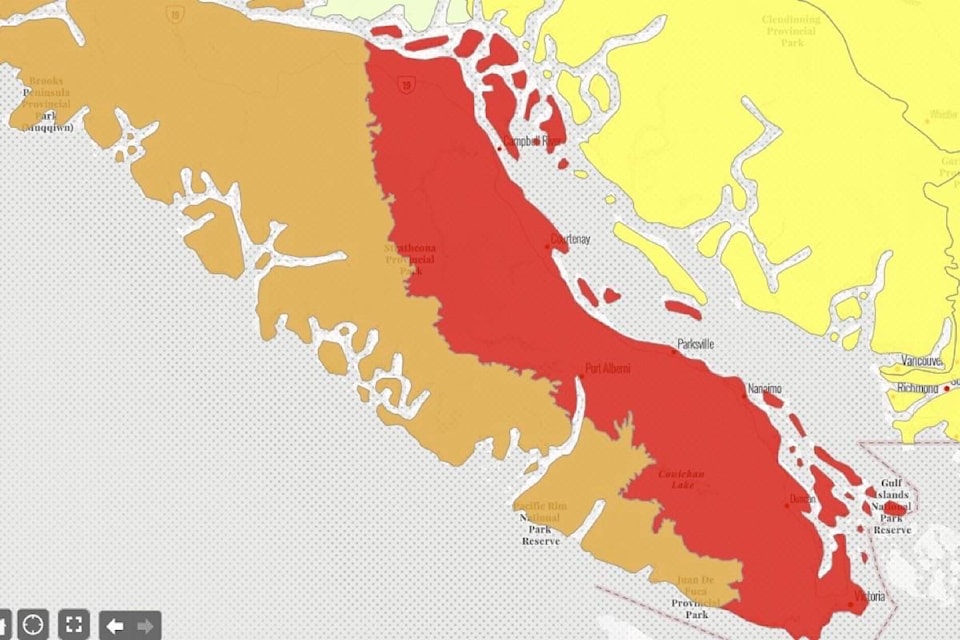Much of Vancouver Island and southern B.C., is now at drought Level 4, and residents are being asked to aggresively conserve water.
Low rainfall this spring and the wave of extreme heat in late June and into July have caused these conditions.
With drought measured on a 0-5 scale, with 5 being the most severe, the East Vancouver Island Basin is already at Level 4 in early July.
“At this level, adverse impacts on people or ecosystems are likely. Adverse impacts on fish have been observed, due to very high water temperatures combined with low flow conditions, dewatering of riffle habitats and disconnected side channels,” according to the Ministry of Forests, Lands, Natural Resource Operations and Rural Development. “Water conservation is being urged across the region to help reduce the risk of significant impacts on the environment or other water users.”
READ ALSO: Meteorologist warns of hot, dry summer ahead for B.C.
The Koksilah and Chemainus rivers in the Cowichan Valley have been listed as areas of particular concern for risk of additional impacts of water scarcity and drought as well as Vancouver Island and Gulf Islands watersheds including but not limited to: Sandhill Creek, Millstone River, Tsolum River, Black Creek, Fulford Creek on Salt Spring Island, as well as the majority of the Gulf Islands.
“Water conservation is everyone’s responsibility. Aggressive conservation is being urged for all areas affected by drought. Residential, agricultural and industrial water users in areas affected by drought should observe all water conservation bylaws, watering restrictions and advice from their local government, irrigation district or water utility.”
Residents are asked to limit their outdoor watering, to take shorter showers and install water-efficient taps and appliances, while farmers are asked to time irrigation to weather conditions, crop needs and soil storage capacity, and focus on high-value crops and livestock. Industry is asked to reduce non-essential water use, recycle used water, and use water effient methods and equipment.
To see where your area is visit the B.C. Drought Information Portal at governmentofbc.maps.arcgis.com.
sarah.simpson@cowichanvalleycitizen.com
Like us on Facebook and follow us on Twitter



